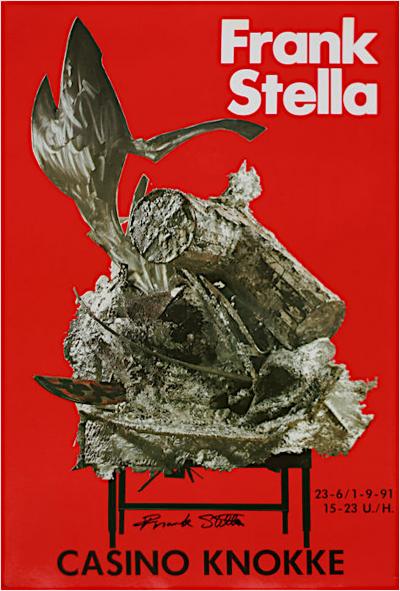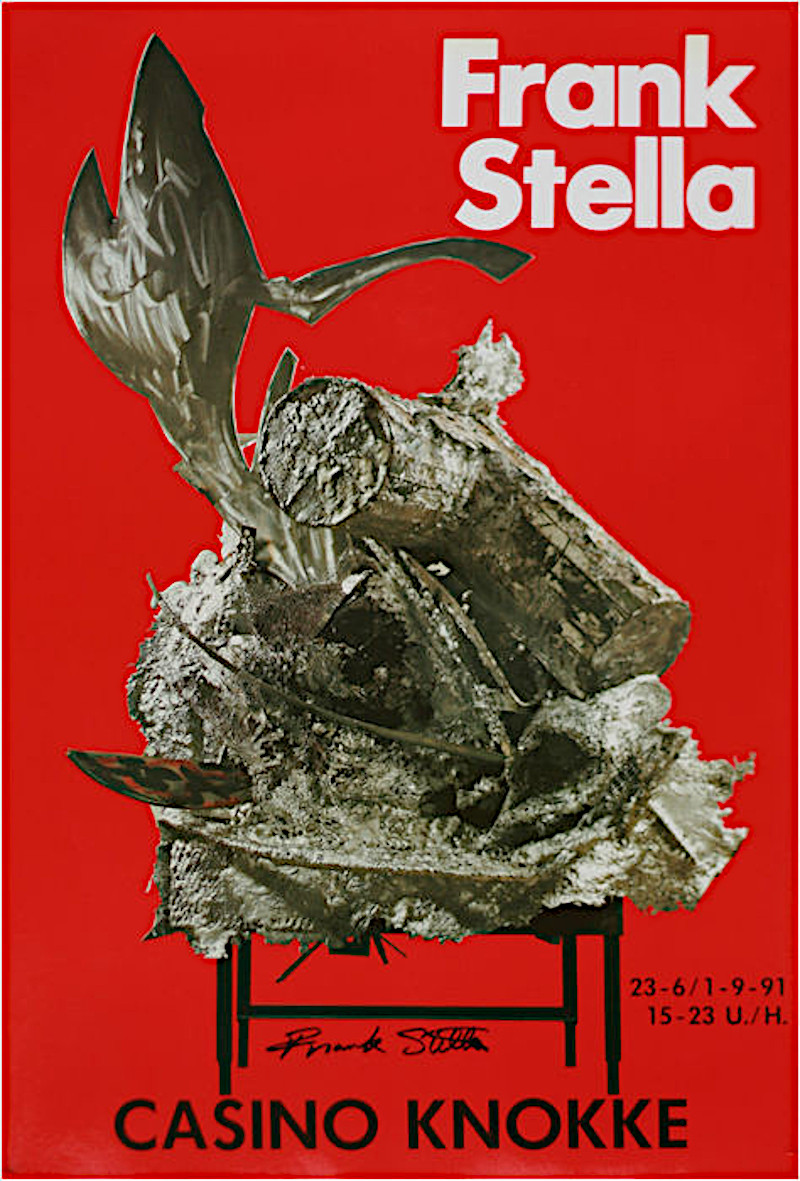-
-
- Alex Katz(2)
- Alexander Calder(23)
- André Derain(80)
- Andy Warhol(49)
- Antoni Tapiès(31)
- Arman(39)
- Aurélie Nemours(1)
- Bengt Lindström(8)
- Bernard Buffet(227)
- César(13)
- Charles Eames(1)
- Charlotte Perriand(9)
- Claude Weisbuch(48)
- Corneille van Beverloo(16)
- Eduardo Chillida(8)
- Georges Braque(81)
- Gustav Klimt(6)
- Hans Bellmer(18)
- Hans Hartung lithograph(26)
- Henri Matisse(200)
- Hervé Télémaque(6)
- Jacques Villeglé(4)
- Jean Cocteau(196)
- Jean Hélion(10)
- Jean Miotte(1)
- Jean Picart Le Doux(3)
- Joan Miro(121)
- Julio le Parc(1)
- Karel Appel(1)
- Keith Haring(8)
- Ladislas Kijno(3)
- Léonard Tsugouharu Foujita(53)
- Leonor Fini(86)
- Louis Toffoli(7)
- Marc Chagall(484)
- Marie Laurencin(48)
- Maurice de Vlaminck(85)
- Maurice Utrillo(21)
- Max Ernst(38)
- Mimmo Rotella(5)
- Niki de Saint Phalle(8)
- Pablo Picasso(411)
- Peter Klasen(7)
- Philippe Pasqua(4)
- Pierre Alechinsky(51)
- Pierre Soulages lithographs(31)
- Pierre Tal-Coat(6)
- Pierre-Yves Trémois(36)
- Raoul Dufy(56)
- Robert Combas(7)
- Salvador Dali(445)
- Théo Tobiasse(5)
- Tony Soulié(10)
- Valério Adami(27)
- Victor Vasarely(17)
- Yves Brayer(34)
- Zao Wou-Ki(21)
Top artists -
-
-
-
- Alex Katz(2)
- Alexander Calder(23)
- André Derain(80)
- Andy Warhol(49)
- Antoni Tapiès(31)
- Arman(39)
- Aurélie Nemours(1)
- Bengt Lindström(8)
- Bernard Buffet(227)
- César(13)
- Charles Eames(1)
- Charlotte Perriand(9)
- Claude Weisbuch(48)
- Corneille van Beverloo(16)
- Eduardo Chillida(8)
- Georges Braque(81)
- Gustav Klimt(6)
- Hans Bellmer(18)
- Hans Hartung lithograph(26)
- Henri Matisse(200)
- Hervé Télémaque(6)
- Jacques Villeglé(4)
- Jean Cocteau(196)
- Jean Hélion(10)
- Jean Miotte(1)
- Jean Picart Le Doux(3)
- Joan Miro(121)
- Julio le Parc(1)
- Karel Appel(1)
- Keith Haring(8)
- Ladislas Kijno(3)
- Léonard Tsugouharu Foujita(53)
- Leonor Fini(86)
- Louis Toffoli(7)
- Marc Chagall(484)
- Marie Laurencin(48)
- Maurice de Vlaminck(85)
- Maurice Utrillo(21)
- Max Ernst(38)
- Mimmo Rotella(5)
- Niki de Saint Phalle(8)
- Pablo Picasso(411)
- Peter Klasen(7)
- Philippe Pasqua(4)
- Pierre Alechinsky(51)
- Pierre Soulages lithographs(31)
- Pierre Tal-Coat(6)
- Pierre-Yves Trémois(36)
- Raoul Dufy(56)
- Robert Combas(7)
- Salvador Dali(445)
- Théo Tobiasse(5)
- Tony Soulié(10)
- Valério Adami(27)
- Victor Vasarely(17)
- Yves Brayer(34)
- Zao Wou-Ki(21)
Top artists -
-
Frank STELLA - Casino Knokke, 1991 - Signed poster
Casino Knokke, 1991
Exhibition poster for the exhibition in Knokke in 1991.
Some posters were signed by the artist with a marker on the occasion of the exhibition.
Dimensions of the work: 61 x 42 cm
Perfect condition.
Dimensions :
- Height : 61 cm
- Width : 42 cm
Casino Knokke, 1991
Affiche d'exposition pour exposition à Knokke en 1991.
Quelques affiches ont été signées par l'artiste au marqueur à l'occasion de l'exposition.
Dimensions de l'œuvre: 61 x 42 cm
Parfait état.
 Frank Stella :
(1936-) is an American painter and printmaker, noted for his work in the areas of minimalism and post-painterly abstraction. Stella continues to live and work in New York. Early visits to New York art galleries influenced his artist development, and his work was influenced by the abstract expressionism of Jackson Pollock and Franz Kline. Stella moved to New York in 1958, after his graduation. He is one of the most well-regarded postwar American painters still working today. He is heralded for creating abstract paintings that bear no pictorial illusions or psychological or metaphysical references in twentieth-century painting. He reacted against the expressive use of paint by most painters of the abstract expressionist movement, instead finding himself drawn towards the "flatter" surfaces of Barnett Newman's work and the "target" paintings of Jasper Johns. He began to produce works which emphasized the picture-as-object, rather than the picture as a representation of something. This new aesthetic found expression in a series of new paintings, the Black Paintings (69). From 1960 Stella began to produce paintings in aluminium and copper paint, they are his first works using shaped canvases. Stella began his extended engagement with printmaking in the mid-1960s. From the mid-1980s to the mid-1990s, Stella created a large body of work. During this time, the increasingly deep relief of Stella’s paintings gave way to full three-dimensionality, with sculptural forms. In the 1990s, Stella began making free-standing sculpture for public spaces and developing architectural projects. Stella's work is included in major international collections, including the Menil Collection, Houston; the Hirshhorn Museum and Sculpture Garden, Washington, D.C.; San Francisco Museum of Modern Art; National Gallery of Art; the Toledo Museum of Art and the Whitney Museum of American Art, New York.
Frank Stella :
(1936-) is an American painter and printmaker, noted for his work in the areas of minimalism and post-painterly abstraction. Stella continues to live and work in New York. Early visits to New York art galleries influenced his artist development, and his work was influenced by the abstract expressionism of Jackson Pollock and Franz Kline. Stella moved to New York in 1958, after his graduation. He is one of the most well-regarded postwar American painters still working today. He is heralded for creating abstract paintings that bear no pictorial illusions or psychological or metaphysical references in twentieth-century painting. He reacted against the expressive use of paint by most painters of the abstract expressionist movement, instead finding himself drawn towards the "flatter" surfaces of Barnett Newman's work and the "target" paintings of Jasper Johns. He began to produce works which emphasized the picture-as-object, rather than the picture as a representation of something. This new aesthetic found expression in a series of new paintings, the Black Paintings (69). From 1960 Stella began to produce paintings in aluminium and copper paint, they are his first works using shaped canvases. Stella began his extended engagement with printmaking in the mid-1960s. From the mid-1980s to the mid-1990s, Stella created a large body of work. During this time, the increasingly deep relief of Stella’s paintings gave way to full three-dimensionality, with sculptural forms. In the 1990s, Stella began making free-standing sculpture for public spaces and developing architectural projects. Stella's work is included in major international collections, including the Menil Collection, Houston; the Hirshhorn Museum and Sculpture Garden, Washington, D.C.; San Francisco Museum of Modern Art; National Gallery of Art; the Toledo Museum of Art and the Whitney Museum of American Art, New York.



